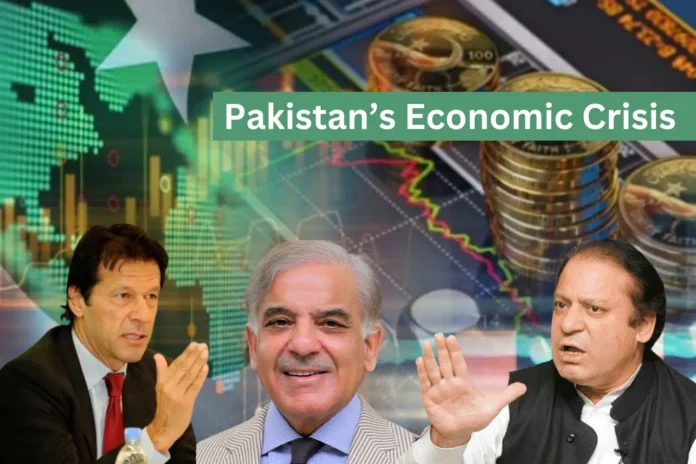Currently, Pakistan’s economic crisis is at its peak. The current increase rate in Pakistan is more than 35%, which is the highest it has been in the past 50 years.
Consequently, the task of providing sustenance for the most economically disadvantaged individuals, who constitute around one-third of the country’s population, has become increasingly challenging.
The growth of dietary dashes on social media has brought a parallel rise in research into the primary causes that have led the nation to its current state.
What effect does the popular economic crisis have on the general public of Pakistan and on the country’s foreign efforts, particularly those including China under the structure of the China-Pakistan Economic Corridor (CPEC), a project deemed crucial by Pakistan for its future economic development?
Pakistan’s Gross Domestic Product (GDP), per capita income, and GDP growth rate are comparatively lower than those of its neighbouring countries and are contributing towards Pakistan’s economic crisis. In fact, Afghanistan, a nation ravaged by war, is the only country in the region with a weaker economy.
Similarly, the region experiences elevated levels of unemployment and inflation, ranking among the highest in comparison to other areas.
Pakistan’s ranking is 161st out of 185 nations in the Human Development Index for the year 2022.
This index evaluates a country’s accomplishments in three fundamental areas: health, knowledge, and standards of living.
Pakistan is part of the group of 25 nations that exhibit the lowest levels of human development worldwide.
The present state of Pakistan’s economic crisis is due to several factors, extensive poor economic governance, instances of corruption, and unequal distribution of resources towards defence and military costs.
In a nation described by a population structure whereby almost 50% of its public is below the age of 22, sharing resources towards the development of academic and expert skills among young individuals has the potential to foster a more supportable economic study of land, hence creating avenues for growth and development.
Contribution of Floods toward the Country’s Crisis:
The present Pakistan’s economic crisis, particularly the increase in prices of important food items, is also due to the floods that occurred last year.

These floods caused significant destruction of farming land, cattle, large road networks, and other critical foundations. This claim holds partial validity since there was a notable increase in inflation subsequent to the occurrence of severe flooding in August of the previous year.
However, the conflict in Ukraine upset the supply of grain to other nations, including Pakistan, leading to a significant surge in food grain prices.
The constant decline of Pakistan’s currency in recent months is contributing to the country’s failure to meet its responsibilities in repaying its external debt.
Pakistan heavily relies on foreign loans as a fundamental component of its economic framework, a model that invariably continues a cycle of increased borrowing, ultimately culminating in failure.
From February 2023 to June 2026, Pakistan is to have the obligation of repaying around $80 billion in external debt.
China-Pakistan Economic Corridor (CPEC) and Pakistan’s Economic Crisis:
As of December 2022, Pakistan’s external debt and liabilities amounted to $126.3 billion, with around 30% of this total being attributed to its indebtedness to China.
While the Chinese government has provided important help to Pakistan’s structure development via the China-Pakistan Economic Corridor (CPEC), which Pakistan aims to use for future economic gains, the current situation demands the federal government often seek refinancing and debt rollovers from China.
While the Chinese government and commercial banks have previously provided assistance to Pakistan through measures such as debt delay or debt jackpots, the future prospects of China’s continued support in this regard remain unsure.
To date, a limited number of projects under the China-Pakistan Economic Corridor (CPEC) have been well executed, despite the existence of a significant project file.
The Chinese have expressed their unhappiness with the persistent delays in project completion, break of ongoing projects, and security risks faced by their nationals employed in Pakistan.
Consequently, this has led to a reluctance on their part to engage in new investment ventures. However, it is noteworthy that Pakistan continues to be a significant recipient of financial assistance from China in the form of loans.
Moreover, China has been widely blamed for impressive expensive interest rates on loans, which have placed a significant financial strain on Pakistan and other countries.
The loans provided by China under the China-Pakistan Economic Corridor (CPEC) initiative may have enhanced Pakistan’s economic crisis, contrary to the likely economic progress.
However, it is too early to make a final verdict on the potential impact of CPEC thanks on the Pakistani economy, as well as the potential chances for future growth.
Overcoming Pakistan’s Economic Crisis?
Currently, the need rests on alerting honesty in government cost while simultaneously activating the task of recovering the nation’s economy.
This entails moving away from a system that overly assigns funds towards defence organizations and heavily relies on foreign debt with expensive interest rates towards a more proper economic model.





